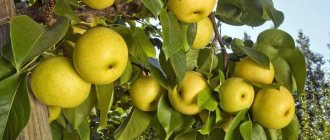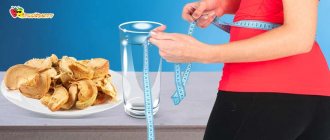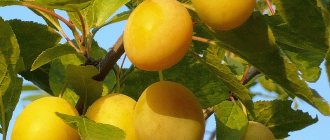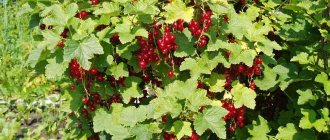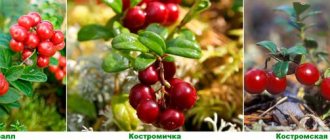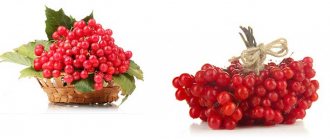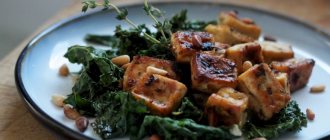Chemical composition and calorie content of pear
The calorie content of a pear per 100 grams is only 42 kcal. The fruit contains:
- fructose, which has a beneficial effect on the functions of the pancreas;
- vitamins of group B1, B2, C, P, E;
- trace elements (phosphorus, iodine, potassium, iron, sulfur);
- folic acid;
- essential oils that suppress inflammation and strengthen the immune system;
- fiber, which gives a feeling of satiety and reduces cholesterol levels in the blood;
- plant fibers that prevent salt deposits in the kidneys and liver, stimulating the excretion of bile;
- a unique phytosterol that can neutralize bad cholesterol and burn excess fat in the body;
- flavonoids are acids of plant origin that have a powerful natural antioxidant effect.
Comment! There is much less sucrose in a pear than in an apple. Although in sweet varieties the percentage of sugar may be higher.
What vitamins are contained in pears?
Pear is a multivitamin dietary fruit. If you take it regularly in food, then it is vitamins that contribute to:
- providing diuretic, anti-inflammatory, choleretic effects;
- increasing resistance to infections;
- relieving depression;
- protecting the skin from aging thanks to the antioxidant properties of vitamin C, E;
- having a beneficial effect on the pancreas, which is important for people suffering from diabetes.
The composition includes vitamins A, B1, B2, B5, B6, B9, C, E:
- Vitamin K prevents the risk of developing atherosclerosis.
- Vitamin E is an active participant in the normalization of hormonal levels, a stimulator of ovulation and weight loss in women
- Vitamin B renews and regenerates cells.
- Folic acid is an essential component for women during pregnancy. Renews and accelerates cell division in the body, prevents damage to the nervous system in newborns.
Calorie content of Chinese pear
Calorie content of dried pears is 270 kcal per 100 g of product, of which:
- Vitamin B1, thiamine - 0.03 mg;
- Vitamin B2, riboflavin - 0.1 mg;
- Vitamin C, ascorbic acid - 8 mg;
- Vitamin E, alpha tocopherol, TE - 0.4 mg;
- Vitamin RR, NE - 1 mg;
- Niacin - 0.5 mg.
- Potassium, K - 872 mg;
- Calcium - 107 mg;
- Magnesium, Mg - 66 mg;
- Sodium, Na - 8 mg;
- Phosphorus, Ph - 92 mg.
Of the microelements, dried pears per 100 grams of product contain only iron, Fe, in the amount of 1.8 mg.
Digestible carbohydrates per 100 g:
- Starch and dextrins - 20.3 g;
- Mono- and disaccharides (sugars) - 42.3 g.
The dried fruit contains 0.1 g of saturated fatty acids.
Fresh pear – 42-45 Kcal
Dried pear – 249 Kcal
Pear is a juicy, sweet fruit loved by many. How sweet a pear is when fresh determines its taste after drying. A fresh juicy pear contains 85% moisture; in our dried pear chips, no more than 12% moisture remains. Dried pear greatly decreases in weight, and the concentration of its dietary fiber, vitamins and elements increases several times! Thus, a handful of dried pear chips will equal three to four fresh pears.
By nature, pear has a grainy texture, and as it dries, this graininess becomes more pronounced. Because of this, pear chips do not have the property of crunching like apple chips; they are soft and plastic.
The calorie content of a valuable fruit depends on the variety and method of preparation.
On average, it is equivalent to 50 kcal per 100 g of product.
In sweet varieties this figure is higher; for example, the energy value of the Conference species reaches 90 kcal.
The caloric content of fruits also varies depending on when they were picked, how they were stored, and for how long.
An ordinary, but very tasty fruit can be eaten both fresh and by preparing a huge number of varied dishes from it.
Pears can be dried, dried, baked, canned, made into compotes, juices, sweet preserves and jams.
A large number of people are very fond of these magical fruits. They are especially popular among those who watch their weight and strive to maintain a healthy body. And this is not surprising, because fruits are the best helpers in the battle with excess weight.
During heat drying, all the beneficial substances in dried pears are completely preserved. This exquisite delicacy has an extraordinary taste. They are used not only in dietary foods, but they are also often found in baby food.
Dried fruits are a storehouse of dietary fiber, soluble and insoluble. They contain pectin substances, with which you can control the level of sugar and cholesterol in the blood (they play a big role in metabolism). Dried fruits are very rich in vitamins C, E and contain folic acid; they are prepared in such a way that this sweetness can be called a source of health for the human body.
In addition, vitamin B9 (folic acid) is responsible for the production of the happiness hormone. Fruits must be taken to strengthen the body.
The usefulness of dried pears is very great, especially for those people who eat dietary dishes. Nutritionists recommend that people prone to obesity and those with diabetes eat dried fruits in limited quantities.
It is known that there are 10 types of Chinese pear. They have a round shape. Many people are interested in how many calories are in a Chinese pear.
The fruits of the Chinese pear have a huge amount of vitamins B, PP, K, E, C, as well as trace elements (phosphorus, manganese, potassium, calcium, zinc, copper).
The most popular varieties
Let's get acquainted with some garden varieties that have earned people's love for their excellent taste, valuable properties and accessibility.
Conference
This variety has been successfully cultivated for over 100 years. Fruits weighing up to 130 g, greenish in color with a golden-brown tint and creamy pulp have an excellent taste. They ripen in the second half of September and in suitable conditions can be stored for up to six months. They tolerate transportation well and do not lose their beneficial qualities.
Fruit trees of this variety are heat-loving, therefore they are grown mainly in the southern regions of Russia. Not only do we love their honey taste, but also pear pests are not far behind us in their desire to feast on juicy fruits and tree leaves.
Abbot
Unlike the Conference, the Abbot variety is resistant to diseases and pests and is more adapted to low temperatures, although it prefers warm regions with a moderately humid climate.
Harvesting takes place a couple of weeks before full ripening, which makes it possible to transport the fruit over long distances without loss of quality. The fruits are large, up to 250 g, elongated, with juicy, oily, sweet pulp, ideal for fruit salads, purees, jams and baked goods.
Duchess
The Duchess variety is known in Europe as Williams. Widely distributed due to its unpretentiousness, high yield and excellent taste. The fruits are medium in size, about 170 g, with a lumpy surface and thin skin, under which a delicate sweet pulp with a subtle nutmeg aroma is hidden.
The summer variety of the variety is harvested in the second half of August. The fruits tolerate transportation well, but are stored for no more than one and a half months, which is not so bad for summer varieties. Winter Duchess ripens in the second half of October and can be stored until April.
Chinese pear
The origin of this variety is easy to guess from its name. Chinese breeders used forest pears with sour, hard fruits as a base and gradually achieved excellent taste while maintaining the original resistance to frost, parasites and fungal diseases.
The fruits are round in shape and weigh from 120 to 300 g, depending on the variety. The color of the peel is from light yellow to bright green. The pulp is sour, fragrant and juicy, but quite hard.
This variety is great for canning, fruit salads, and baking. It is the only one that can be combined with fermented milk products, since it does not contain starchy carbohydrates. Thanks to this property, well-known recipes with pear can be supplemented with milk-fruit cocktails, smoothies, yoghurts and ice cream with pieces of this fruit.
Useful properties of pear
Pears are recommended for children, pregnant women, the elderly, and patients with stomach and intestinal problems.
Many doctors and healthy eating enthusiasts constantly talk about the invaluable benefits of the fruit. So, if you constantly drink tea from the leaves, you will have a healing effect on the kidneys.
Unconditional advantages of pear:
- strengthening blood vessels and the body’s immune forces;
- suppression of inflammatory processes;
- normalization of hematopoietic functions, thyroid gland, digestive processes, intestinal microflora;
- removal of puffiness;
- removal of toxins, poisons;
- improvement of heart function;
- increased hemoglobin;
- elimination of heartburn, deficiency of microelements and vitamins;
- increased energy;
- decrease in body temperature thanks to arbutin, a natural antibiotic in the composition;
- healing of wounds, cracks, cuts on the skin;
- restoration of hormonal levels.
What are the benefits of pears for men?
Pear and various pear drinks (teas, compotes) are an effective remedy for the treatment and prevention of prostatitis. And even if, fortunately, you do not suffer from this disease, it is still recommended to sometimes eat pears to prevent diseases of the reproductive system.
Benefits of pear for women
The benefits of pears for women are invaluable during the menstrual cycle. Eating it can reduce the severity of unpleasant symptoms, namely: improve mood, relieve pain, and increase performance.
Cystitis is one of the common diseases among women. You can speed up recovery and reduce pain during urination by eating pears with rowan and cranberries. This fruit and berry mix allows you to increase the volume of urine excreted.
Pear is a valuable component included in face masks:
- Pear pulp (2 tablespoons) should be mixed with honey (1 teaspoon) and a pinch of cinnamon. You need to apply this mask to your face once every 3-4 days. This will refresh your skin and give it a healthy look.
- A mixture of pear puree (2 teaspoons) and hydrogen peroxide (4 drops) is a very effective remedy for combating acne and age spots.
This is interesting: Sulfur for grapes: methods of using colloidal sulfur to treat plants.
Pear-based masks should be applied only to intact skin. People with very sensitive skin should not use pear masks.
It is known that many women strive to get rid of extra pounds. Pear is very useful to include in the menu for various diets. This fruit will saturate the body with useful substances, but will not allow you to gain weight due to its low calorie content.
In addition, pears are rich in insoluble dietary fiber. Their regular intake into the body helps to normalize the functioning of all digestive organs, as well as eliminate toxins. Therefore, in summer and autumn, when the pear harvest season begins, you need to eat at least 2 of these aromatic fruits per week.
Pears are useful during pregnancy, as they allow you to saturate the body with folic acid and increase the level of hemoglobin in the blood. In addition, pregnant women often suffer from constipation, and pears can gently solve this problem.
Pear for children
Many mothers ask: at what age can children be given pears? Sweet, aromatic fruits contain virtually no allergens, so they should be included in the diet of infants up to 1 year of age to stimulate growth. In addition, the digestibility of pears is much better than apples and other fruits:
- Juice in its pure form is allowed to be drunk from 4 months;
- puree – from 6 months.
We recommend reading: How to eat tamarind fruit: description, health benefits and harm, use, how to store, photos
Doctors recommend:
- introduce baked pears into complementary foods for infants, because allergic substances may still be present in the composition;
- prepare decoctions of dried fruits to eliminate fever and colds and normalize digestion;
- prepare a drink or alternate with oatmeal broth.
Advice! Pear seeds are an excellent remedy for diarrhea in children. Also to increase the defenses of the body as a whole.
Contraindications and harm of dried pears
Who should refrain from consuming dried pears:
- Patients with stomach ulcers. People in this category should not eat foods containing fiber.
- People with individual intolerance. Although these fruits are hypoallergenic (allergies to them are very rare), in case of allergic reactions to alder and birch, such a reaction may also occur to dried pears.
It is important to remember that you should not combine this dried fruit with natural milk, as this can cause intestinal upset. But eating it with cottage cheese, sour cream or yogurt will not cause any consequences.
Unripe, sour or tart pears are harmful to health. Therefore, it is worth excluding them from the menu or minimizing their consumption.
This is such a useful and medicinal fruit. It can be dried so that you can enjoy a dried delicacy, whether not fresh or not, at any time. After all, we don’t always have summer; we also have winter, and in winter the tree does not bear fruit.
You can buy dried pear fruits here.
Summer is coming soon. And I will have a new harvest of yellow fruits at my dacha. I’m already dreaming of a new harvest and plantings.
If you eat a pear on an empty stomach and wash it down with water, such nutrition can cause problems with digestion and absorption of food, heaviness and bloating are guaranteed. If you decide to enjoy fruits, then you need to eat them separately from other foods, especially meat. Make it a habit to have a light snack of fruit only after your main meal.
nasporte.guru
The benefits of pears for the human body
Eating pears is associated with improving the functioning of the gastrointestinal tract, maintaining a healthy metabolism, reducing excess body weight, improving the health of the cardiovascular system, preventing various diseases such as cancer, diabetes, etc. Here are the benefits of pears for the human body:
Pears are rich in fiber
One medium pear contains more than 5 grams of dietary fiber (fiber), making this fruit a fiber-rich food. Eating just two medium pears provides approximately 40% of your recommended daily fiber intake. Dietary fiber contains no calories and is an essential part of a healthy diet because it helps maintain healthy blood sugar levels and promotes regular bowel movements.
Pears contain pectin, which is a type of special beneficial water-soluble dietary fiber that helps lower cholesterol and improve digestion.
Among fruits rich in pectin, apples are the most famous, but pears are actually the best source. As a soluble fiber, pectin works by binding to fatty substances in the digestive tract, including cholesterol and toxins, and helping eliminate them.
Eating pear provides benefits by helping to remove toxins from the body, helping regulate the use of sugar and cholesterol in the body, and improving the health of the intestines and the entire digestive system.
Pears supply the body with vitamin C
Just one medium pear provides 7.5 grams of vitamin C, which is equal to a full 12% of the recommended daily intake of this vitamin.
Vitamin C is a powerful antioxidant that fights damage caused by free radicals and reduces oxidative stress. It is also useful for protecting DNA, stopping cell mutation, maintaining healthy metabolism and tissue repair. This vitamin is sometimes called even the most powerful vitamin on the planet!
Eating pears also benefits your skin. Vitamin C, which comes from foods high in antioxidants such as pears, boosts skin immunity and prevents skin aging. Foods rich in vitamin C also help heal cuts and bruises, protect against skin infections and a number of age-related diseases.
Pears supply the body with antioxidants
In addition to vitamin C, pear peel also contains important phytonutrients, including polyphenols, phenolic acids and flavonoids, which can help prevent disease, so don't peel your fruit!
In fact, when researchers studied the antioxidant capacity of pears and apples, they found that people who ate the fruit with the skin on had significantly higher levels of healthy fatty acids (higher plasma lipid levels) and antioxidant activity than people who cut off the skin and only consumed fruit pulp (2).
Diets high in fresh fruits, including pears, have also received a lot of attention for their anti-inflammatory and anti-cancer effects - thanks to high levels of essential nutrients such as vitamin C, antioxidants and phytochemicals. These essential nutrients and antioxidants make pears one of the best anti-inflammatory foods.
Pears also have antioxidant and anti-carcinogenic properties thanks to glutathione, a “super antioxidant” that helps prevent cancer, high blood pressure and stroke.
According to research from the National Cancer Institute, daily consumption of fresh fruit has a positive effect on the body's ability to prevent cancer growth, reduce inflammation, normalize pH balance, reduce oxidative damage to lipids, and improve antioxidant status in healthy people (3).
Pears can help you lose weight
Health benefits of pears include their ability to help maintain normal body weight. Extensive research has shown that consuming fruits and vegetables helps prevent obesity. Time and time again, we see that the more fresh fruits and vegetables a person eats, the less likely they are to gain weight and struggle to stay healthy (4).
Longitudinal studies of overweight adults have found that diets high in fiber from fruits and vegetables are associated with slower weight gain, likely because fruits and vegetables are highly nutritious and low in calories. Eating pears allows you to feel fuller in your stomach longer, which reduces the risk of overeating and consuming excess calories. It is this effect that causes the reduction of excess body weight.
Pears help improve heart health
Higher levels of fruit consumption are associated with lower rates of cardiovascular disease. Epidemiological studies show a correlation between diets high in fruits and vegetables and a lower risk of cardiovascular disease, heart attacks and strokes.
The beneficial effects of fruits and vegetables are likely due to the presence of antioxidant phytochemicals, which keep arteries clear, reduce inflammation, and prevent high levels of oxidative stress (5). We also know that a specific type of fiber found in pears called pectin is very beneficial for lowering cholesterol levels at home.
This is interesting: What is lentil and what does it look like: how it grows, types and varieties with descriptions and photos
When researchers from the Johns Hopkins Bloomberg School of Public Health analyzed 15 years of data on the diets of adults, they found that overall increases in fruit and vegetable consumption were associated with a lower risk of death from cancer and cardiovascular disease (6).
This supports the recommendation that to be healthy you need to consume multiple servings of fruits and vegetables of different types (ideally five to nine times a day). There is also evidence that eating fruit prevents strokes, chronic obstructive pulmonary disease, diverticulosis, and hypertension (7).
Pears improve digestion
Due to the significant amount of fiber in pears, eating them is a great way to prevent or treat digestive problems. In fact, getting more fiber from whole foods is the best natural way to relieve constipation.
Eating pears benefits digestive health due to the pectin they contain, which is considered a natural diuretic and has a mild laxative effect. To help improve bowel movements, prevent water retention, and reduce bloating, you can eat fresh pears (including the skin) or drink pear juice.
Higher fruit consumption also correlates with improved overall digestive health, especially the colon. Phytonutrients found in pears and other fruits protect the digestive system from oxidative stress and help alkalize the body and balance pH levels. Eating more pears can also be beneficial as a natural treatment for hemorrhoids.
Pears help fight diabetes
Although pears and other fruits or vegetables contain natural sugars in the form of fructose, higher consumption is associated with a reduced risk of diabetes, especially among women (8).
After following more than 9,600 adults ages 25-74 for about 20 years, researchers from the Centers for Disease Control and Prevention (CDC) found that eating five or more different fruits and vegetables daily significantly reduced the risk of developing diabetes. Researchers now know that some flavonoids in fruits, including pears, can improve insulin sensitivity, which is key to preventing and treating diabetes and obesity.
Pears are considered low glycemic index fruits. One medium pear contains approximately 27 grams of carbohydrates, but due to their high fiber content, these carbohydrates release sugar slowly into the bloodstream and therefore have a low glycemic load. Compared to eating processed sweets that contain refined sugars, which can negatively impact your blood sugar levels, eating pears is a great way to curb your sweet cravings without the negative consequences.
Pears are a good source of energy
As with all fruits, eating pears can give you a quick boost in energy levels before a workout. Pears are a natural source of fructose and glucose, which the body quickly uses to improve physical performance, concentration and endurance, making them an excellent pre-workout snack. Post-workout, you also need glucose to replenish glycogen stores and help repair torn muscle fibers, so consider having a pear along with a healthy source of protein both pre- and post-workout.
Pears help maintain healthy bones
Pears are a good source of two nutrients that promote bone health: vitamin K and boron. Vitamin K deficiency increases the risk of developing bone-related diseases because it works with other essential nutrients such as calcium, magnesium and phosphorus to help prevent bone breakdown. In fact, some experts even consider vitamin K to be potentially the most important nutrient for fighting osteoporosis.
Boron helps keep bones strong, improves bone mineral density, prevents osteoporosis, treats inflammatory diseases such as arthritis, and improves strength and muscle mass. Boron is often overlooked in terms of preventing osteoporosis, but many health experts consider it an important part of preventing age-related bone damage.
What can you cook from pears?
Many healthy recipes are prepared from the fruit:
- preparations for the winter in their own juice;
- pear juice;
- pie;
- dessert with cottage cheese;
- jam;
- tea from pear branches;
- juices, compotes;
- snacks;
- side dish for meat and fish;
- salad with cheese.
Pear is a product used in many dietary salads, as it removes toxins, waste, cholesterol from the body well and creates a feeling of satiety.
Salad with pear and cheese
Salad with pear and cheese
- bacon – 100 gr.;
- salad onion – 1 pc.;
- cheese – 50 gr.;
- pear – 1 pc.;
- cream – 1 tbsp. spoon;
- lettuce leaves - 1 bunch;
- vegetable oil – 1 tbsp. spoon.
Place chopped lettuce leaves. They have bacon fried on both sides, sliced pear and onion. To prepare the sauce, mix finely chopped cheese with cream and heat over heat until the cheese melts. Pour this mixture over the salad, add salt and pepper if desired.
Pear jam
To prepare you will need:
1 kg fresh pears
3 cups sugar
Cooking method:
Wash the pears, peel and core them, cut into small slices. Place in a large saucepan, add sugar and cinnamon, let sit for 10-15 minutes. After the pear gives juice, put it on the stove and cook for 15-20 minutes. Pear jam is ready. Immediately pour into prepared jars and close with lids.
To ensure that the slices do not boil over and turn into puree, but remain intact, you need to use hard varieties of pear.
Pear dessert with cottage cheese
Pear dessert with cottage cheese
- pear – 3-4 pcs.;
- cottage cheese – 100 g;
- sour cream – 3 tbsp. spoons;
- sugar – 3 tbsp. spoons;
- fruit juice - half a glass.
Cut the pears into 4 parts and place on a plate. Mix cottage cheese thoroughly with sour cream , sugar and juice until smooth. Place the resulting mixture on each pear slice.
This is interesting: All about blueberries: description and characteristics of varieties, proper care, where they grow
There are a lot of recipes for pears - pies, curd desserts, pancakes, jam, various drinks, etc.
During heat treatment, the pear does not lose most of its beneficial elements. But fresh fruits should also be present in every home.
Eating 1-2 pears a day can provide the body with a daily requirement of cobalt , which helps the kidneys excrete excess water and promotes the absorption of iron. When choosing fresh fruit in the store, you need to know that a good pear should have a sweet aroma even when uncut.
How to dry pears at home
Anyone can successfully make dried pear fruits at home. Usually they use slightly unripe fruits with dense pulp, but not very juicy. It is better not to use varieties with a lot of seeds that are “astringent” in the mouth. Sweet summer varieties are well suited: Ilyinka, Forest Beauty, Fragrant, Limonka, Zaporozhskaya.
Medium-sized fruits are collected, washed and boiled. Everyone does drying in their own way, but many grind the pear, first cutting it into 4 parts to remove the seeds, and then into slices. The product is then soaked in wine vinegar (1%) to avoid further darkening.
Pears should not be stored for more than 2 days before drying, otherwise they will no longer be suitable. Before drying, you need to slightly scald the fruits by throwing them in boiling water for a while. In this case, you can add sugar to the pan with boiling water if you wish.
After 10–15 minutes of cooking, remove the fruits, allow them to cool, and then, if necessary, cut them into slices. Then the slices dry. It is at this stage that it is advisable to treat them with wine vinegar.
There are several drying methods:
- natural method;
- oven;
- special electric dryer;
- microwave.
In warm regions of the country, you can dry pears in early autumn without any problems. This is especially important, because the longer the pear ripened or lay, the more useful substances accumulated in it. People living in private houses simply leave the fruits on the roof all day.
But even in cold regions it is possible to prepare dried fruits, since almost everyone has a microwave or at least an oven.
With the natural method, the slices are laid out on a sieve (tray, baking sheet) and left in the sun so that dust does not fall on them. When the sun sets, the pears are covered with plastic and taken home. After a couple of days of drying, the fruits are laid out in a shaded place for 3 days to dry, turning them over periodically.
If you have an oven, drying is done right in the kitchen. The slices are laid out on a baking sheet and dried for 2 hours at a temperature of 55–60 degrees. Next, the temperature is increased by 20 degrees. So whole fruits should dry for about a day (12–16 hours if they are slices).
There are special electric dryers with trays and autonomous operation: uniform automatic circulation of warm air. This is very convenient; you just need to put the fruits on a tray and wait for the finished result.
The fastest way to dry is in the microwave. In a few minutes the portion is ready, but there is a risk of miscalculation and drying out the product. There is no exact recipe, since it all depends on the power of the oven. You should start by drying for 2.5 minutes with a power of 200 W. If this is not enough, the process is repeated for 30 seconds. When the slices have become elastic and springy, then everything is ready.
Some people prefer to dry pears whole without dividing them into slices. The process is completely similar, the only difference is time. It makes sense to dry the whole fruit if the fruit is small in size. It will take about a week to keep whole fruits in the sun.
In the oven, whole pears will be ready in about 20 hours, turning constantly. It should be dried until the fruits turn brown. With good ventilation, dried fruits will be ready in 8–10 hours.
You can successfully dry wild pears at home. But you need to follow the rule: you cannot pick fruits from trees. You should collect the fallen pears, put them in a container (say, a bucket) and let them rest. Readiness for drying is determined by taste and color. When the fruit has become aromatically sweet and its skin is brown, it is time to make dried fruits.
Video:
dried pears for decorating cakes Expand
Using pears in cosmetology
Thanks to its many healing properties, the fruit has found wide application in cosmetology, because it retains its properties even after heat treatment.
The fruit can be found in many creams, masks, and scrubs. It is considered the best ingredient for anti-aging cosmetics because it promotes:
- increasing skin elasticity and firmness;
- narrowing of pores;
- getting rid of wrinkles, acne;
- relieving inflammation;
- providing a whitening, toning, refreshing effect;
- eliminate dandruff problems by rubbing pear juice into the hair follicles;
- giving the skin smoothness and velvety if you wipe your face with the composition of the fruit.
Pear face masks
The fruit relieves inflammation well, tones and refreshes the skin, and strengthens blood vessels. It is widely used in making face masks at home. Fetus:
- has a whitening, restoring and toning effect;
- restores turgor and skin elasticity;
- treats acne;
- prevent acne formation;
- strengthens capillaries on the face;
- prevents the appearance of rosacea and pigmentation.
Thanks to its rich chemical composition, lotions, masks, and whitening creams are prepared from the fruit. It has also been proven to have an excellent exfoliating effect.
Pear in combination with almond oil tones the skin, smoothes wrinkles, and eliminates muscle sagging. Pear juice in combination with buckwheat flour is an excellent natural remedy for tightening and cleansing pores, and together with cream and starch it is a good mask for aging skin.
A mask of pear puree, semolina and patchouli ether will restore the epidermis, moisturize the skin, give freshness and elasticity. To have a cleansing (tonic, rejuvenating) effect, you can use a mixture of pear, clay and soda.
Attention! Pear puree eliminates acne well, relieves inflammation, has a lifting effect, and removes dead skin particles.
Hair blower
Pear hair masks are an excellent remedy for all types of strands. Strengthening and restoring cosmetics for damaged hair are easy to prepare at home.
The benefits of pear seeds and fresh juice for hair are enormous thanks to pectin, acids, vitamins A, C, B, E in the composition. So, to give the strands more volume, you can prepare a mask from seeds and fruit peels:
- grind into pulp;
- add swollen gelatin;
- mix;
- Apply to hair, distributing along the entire length;
- stand for 15 minutes;
- wash off with shampoo.
Using an electric dryer and microwave
How to properly dry pears at home using an oven? Since weather conditions do not always provide an opportunity for drying fruits, this can be successfully done using an oven in a kitchen. The fruits are laid out on a baking sheet in one layer and dried at a temperature of 55°C...60°C.
After 2 hours, the heat should be raised to 80°C. When the fruit decreases in size, it is reduced to 55°C; this temperature is the finishing temperature. The duration of the process depends on the size of the product used: for slices it takes 12-16 hours, for whole fruits – 18-24.
We suggest you read: When to plant carrots in open ground in spring
How to properly dry pears at home using household appliances? Drying apples and pears using household appliances has its own characteristics.
An electric dryer equipped with several layer trays allows you to dry a decent amount of product overnight.
The technology provides for complete autonomy of the process: uniform automatic circulation of warm air is ensured, the fruit does not need to be turned over.
Using a microwave oven is the fastest way to prepare drying: one portion is cooked in 2-3 minutes. However, not everyone accepts it, since here you can not calculate it accurately and dry out the fruits, turning them into coals. Before placing in the oven, the pears are washed and placed on a plate covered with a cotton cloth.
The device is set to 200 W and 2.5 minutes of operating time. If the pears are not dry enough, repeat the process for half a minute. Cooked dried fruits should be elastic and spring back when pressed.
They will be tough for one reason: carrion or completely immature specimens were dried.
Pear storage
For storage, it is necessary to harvest the fruit as it ripens:
- in May-June, flowers and leaves are collected for medicinal purposes;
- in June-August - fruits of summer varieties;
- in September - fruits of autumn varieties;
- in October - fruits of winter varieties with the possibility of fresh storage.
Summer and autumn varieties can be dried and preserved for the winter in the form of jam and preserves.
Before drying, pears must be heat treated by immersing them in boiling water for several minutes (you can add sugar, cinnamon, and lemon juice to the water).
It is important to dry the fruits in the shade, but first leave them in the sun for up to 3 days. Next, the fruits are placed for drying in well-ventilated areas (on racks) or the fruits are strung on a strong thread.
You can dry the pear in the oven at t +55…+60 C.
Dried fruits are stored well in wooden boxes with slots. The main thing is to lay them so that the stalks are at the top, and the pears (if possible) do not touch each other.
Methods
How to dry pears for the winter? There are several ways to dry pears for the winter. Initially, the process was carried out outdoors under the sun's rays. Read more about this in our article “Drying pears on the street.” Drying using an oven and modern technology is considered the most popular and fastest today, more about which can be found in the articles “Drying pears at home” and “Drying pears using household appliances.”
We invite you to read: What flower does Cancer have according to the horoscope? Cancer. Flowers and indoor plants by zodiac sign. Animal mascots of Cancer
You can also find recipes for drying pears for the winter at home on our website.
Pear: answers to questions
- What is more beneficial: pears or apples?
Both pears and apples are fruits that are beneficial to human health. Apples have lower calorie content compared to pears and contain a lot of iron. Eating apples stimulates brain function and also helps cleanse the intestines of toxins. Pears, in turn, act as a natural antibiotic, saturate the body with minerals and vitamins, and normalize the functioning of the digestive system. Pears taste sweeter than apples, but they contain less sugar. However, a person needs to consume all fruits in moderation.
- How to eat a pear correctly?
Pears can be eaten in any form. They are useful fresh, dried and dried. Skilled housewives use pears to make wine, marshmallows, candied fruits, and marmalade. Dried fruits are very tasty. Throughout the year you can eat pears and drinks based on them: decoctions, juices, teas. If you add apple or lemon juice to pear juice, the drink will acquire an even more pleasant smell and taste. Duchess pears can be used to make dried fruits and compotes. They are great for rolling into jars.
How to choose a pear
When choosing, you should pay attention to sweetness and aroma. The fruit should have a sweet aroma even when uncut.
How to use pear for medicinal purposes
To eliminate diarrhea, 100 g of dry fruits are poured with 1 liter of water and boiled for another 30 minutes. After this, leave for 2 hours and drink 100-150 ml 3 times a day. The same recipe will help reduce body temperature.
To combat anemia, 2 pear fruits (chopped and peeled and peeled) are mixed with 2 teaspoons of honey. You need to eat this mixture at one time and prepare a new composition every day.
If bronchitis has begun, then the pear will also help in treatment. The mixture will require 1 glass of pear juice and 10 ml of rosehip syrup, which are mixed and diluted with 100 ml of water. Use the mixture 3 times a day, in equal parts. To eliminate coughing and the unpleasant feeling of suffocation, you can additionally consume boiled and baked fruits.
How many pears can you eat per day
You can’t overload on pears, eat without moderation, this can cause great harm to the body instead of benefit. Normally, you can consume 2-3 fruits per day. The main thing is not to eat on an empty stomach and not to drink water.
Advice! It is undesirable to eat overripe or unripe fruits, which may contain high concentrations of acetaldehyde and cause digestive upset.
Unripe fruits contain wood cellulose, which causes heaviness in the stomach.
Is it possible to eat a pear if you have diabetes?
Juice from fresh pears is even recommended for consumption if you have diabetes. Although pear increases glucose levels, it does so slowly, that is, a diabetic will not experience sudden surges in sugar.
In addition, pear has a good diuretic effect, stimulates metabolic processes, removes toxins, which is very important for the diabetic body.
Sources:
- https://poleznii-site.ru/pitanie/frukty/chem-polezna-grusha.html
- https://vsvoemdome.ru/eda/produkty/chem-polezna-grusha
- https://fountravel.ru/chem-polezna-grusha
- https://www.ayzdorov.ru/tvtravnik_grusha.php
- https://foodismedicine.ru/grushi-polza-i-vred-dlja-organizma/
- https://PravilnoyePitaniye.ru/polza-i-vred/grusha-polza-i-vred-dlya-organizma-cheloveka.html
- https://profermu.com/sad/derevia/grushi/polza-i-vred-dlya-zdorovya.html
- https://VitaminyInfo.ru/v-produktah/vitaminy-v-grushe
Use of dried pear
Like many fruits and vegetables, this fruit is used in folk medicine and to maintain beauty. Here I have added several effective recipes with our yellow fruit. For kidney stones and one for strengthening hair.
Chop 20-30 cm of branches, add water (2 l), bring to a boil and cook for 10 minutes.
You need to drink the product like tea throughout the day.
A decoction of wild pear with the addition of leaves accelerates the effect of removing stones from the body and provokes diuretic processes.
Make tea from the leaves: brew pear and apple leaves and drink instead of tea.
Grind the fruit without skin and core in a blender, add a raw egg and burdock or olive oil (2 tbsp.).
Keep the mixture on your head under a plastic cap overnight. In the morning, wash off with shampoo.
Pear has a positive effect on the human body. It is a storehouse of vitamins, micro- and macroelements and other valuable compounds. In moderation, the fruit is good for health.
Dried pear is widely used for preparing fruit drinks and compotes. Based on it, you can make homemade hangover drinks, including adding the product to homemade wines and kvass, thanks to which they acquire a special bouquet.
Of course, dried pear can be consumed as an independent product, as a snack in the morning. It is a good addition to desserts - homemade cakes, puddings, ice cream, added to fruit salads, steamed morning porridge.
You can also use dried pear as an addition to meat during baking or to prepare sweet sauces for it.
